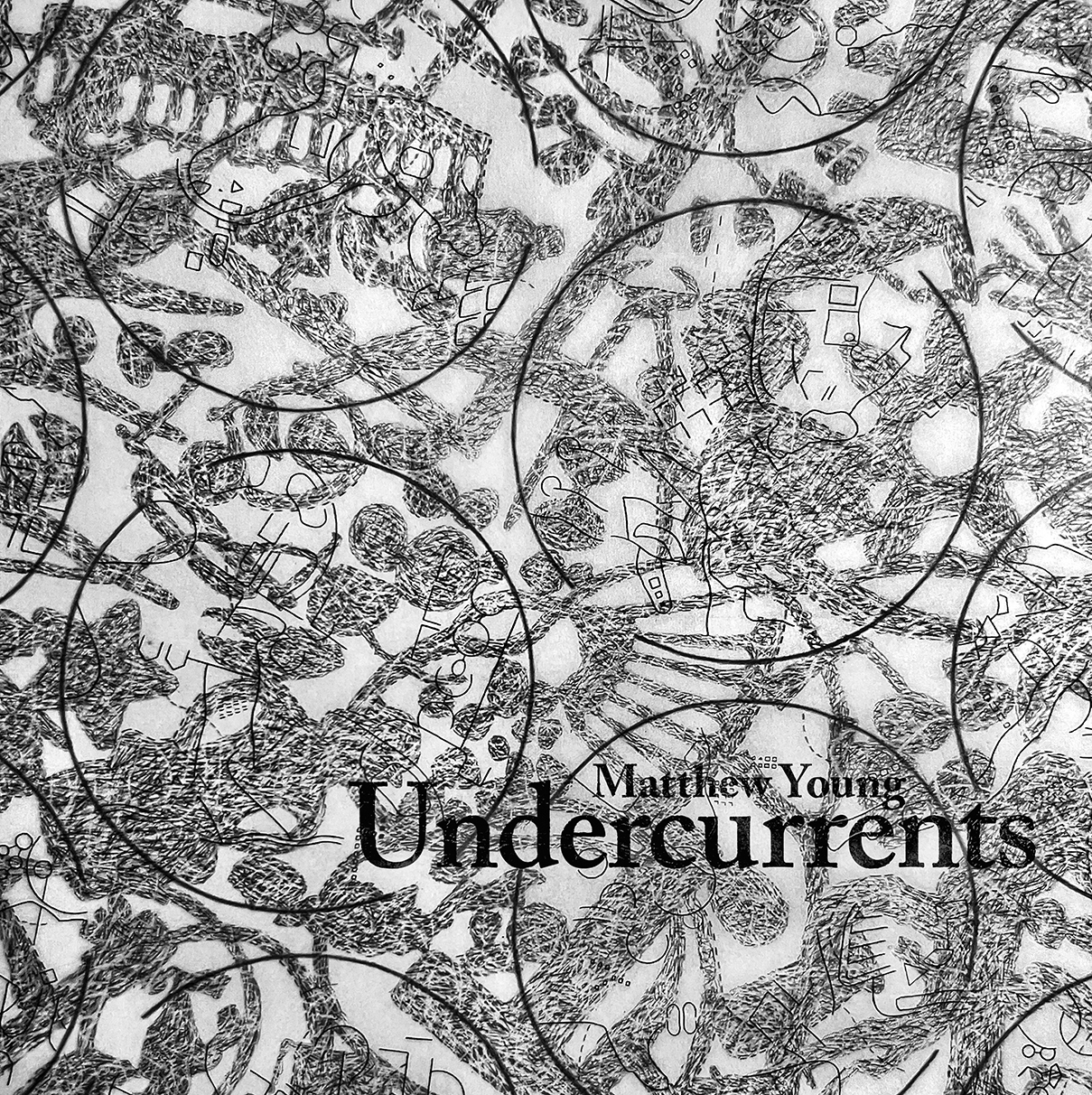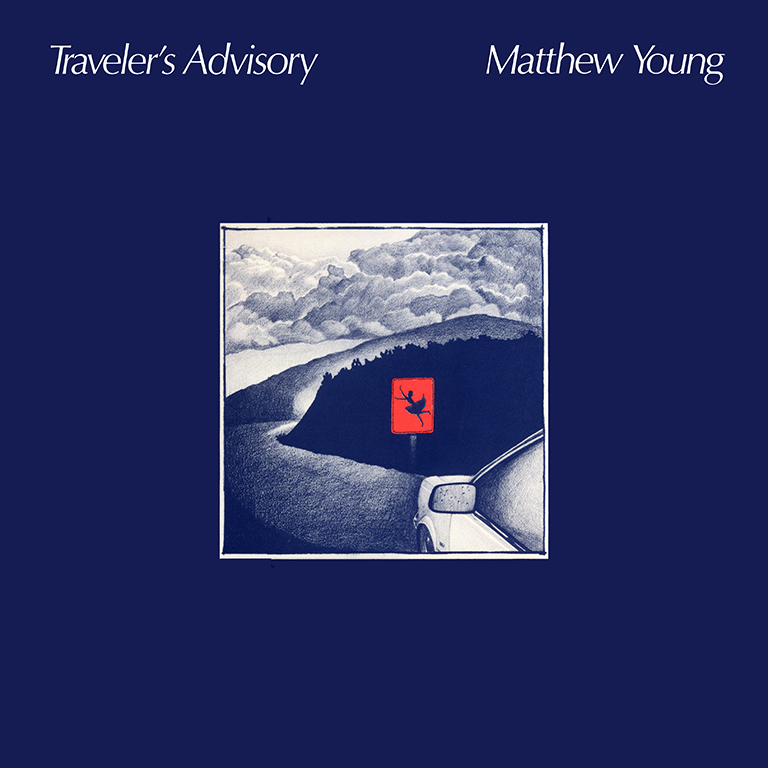
Cover art: “After Nature 2” by Susan Hockaday
Listed in NPR’s All Songs Considered: “Best new albums out May 30, 2025”; the track “Reflexion” was featured in the “New Music Friday” playlist.
Named a “Best of 2025” by Soundolm.
“It is a rarity that an album has the effect of making the listener question the essence of linear time…. This work feels like the unreliable, fragmented nature of memory itself and how instead, like the tides, we ebb, flow, turn and retreat.”
— Kirsteen McNish, The Quietus (Read the full review HERE.)
“Young remains hard to pin down, these eight tracks taking in rhythmic marimba bliss-outs (‘Reflexion’), tentative computer music (‘A Game of Chess, A Game of Chance’), and wistful dulcimer folk that shows off his fragile, untutored voice (‘The Summer Girls’). The result still sounds somewhat halting and handmade, but with a genuine gentleness and honesty that shines through.”
“This is a beauty… a rhythmelodic fever dream traversing hammered dulcimer, synthetic marimbas, harp and piano with a subtly off-kilter, spangled feel.”
— Boomkat (NL)
Undercurrents
Bandcamp listing: https://matthewyoung.bandcamp.com/album/undercurrents
The new album contains compositions from recent years and from earlier periods.
Track notes: In “Reflexion,” for marimba quartet, the first two sections reflect in different ways the theme of the last section, and in each section the parts form a canon. (This piece was heard in a scene in the television spy series “Berlin Station.”) • Both “One and All” and “Undercurrents” make use of various effects on a basic melody to create the sounds heard under the main instrumentation. In “Undercurrents,” the piano tracks involve audio-to-digital conversion of the effects tracks, careful editing of the resulting midi tracks, and assignment of piano instrumentation heard over the effects tracks. • “A Game of Chess, a Game of Chance” was done on the Princeton University IBM mainframe in 1976, based on moves in a Fischer-Spassky game and rolls in a game of Liar’s Dice. • “Summer Girls” and “Her Key is Minor” are settings of poems by my aunt, Marion Lineaweaver, one with hammered dulcimer (and undercurrents), the other with synthesizer. • “Inflexion” is a straightforward piano piece expanding on the theme of the last section of “Reflexion.” • “Into the Woods” is a hammered dulcimer improvisation.
*****
“Non cercate coerenza qui, piuttosto una fantasia smisurata.” (“Don’t look for consistency here, but rather an immeasurable imagination.”)
— Gino Del Soler, Blow Up (IT)
“Difficult to pin down, elusive and undefinable, this collection of songs by Matthew Young easily insinuates itself under the listener’s skin and allows us to (re)discover a great author.”
— Marco Boscollo, Sentireascoltaire (IT)
“Matthew Young explores a whole range of textures and, by juxtaposing all of his creations, manages to create a third album of great sensitivity with a very intense, dreamlike and experimental density that makes this record truly beautiful.”
— Valery John Klebar, STNT (FR)
“Young plays the hammered dulcimer with the disciplined reverence of an alchemist…. Simply put, Undercurrents is a triumph across many musical realms.”
— Krijg het laatste FrontView Magazine (NL)
*****
The score for “Reflexion” can be seen and downloaded HERE.

Cover art by Marion Costello
“Lovely, strange and cerebral”
— Meg Baird, musician/songwriter
“A truly timeless piece that might not fit neatly into any one stylistic box but can definitely be appreciated by listeners with open ears from all corners of the musical universe.”
— James Allen, Allmusic / full review HERE
Traveler’s Advisory
Bandcamp listing: https://matthewyoung.bandcamp.com/album/travelers-advisory
I fell in love with the hammered dulcimer after hearing it played at a friend’s wedding. Since I also played the banjo, I decided to explore my interest in folk and blues, with electronics assisting and filling in for other traditional instruments. The sign on the cover illustration by Marion Costello could be found on the entrance road to McLean Hospital in Belmont, MA. Not sure if it’s still there.
Track notes: “Objects in Mirror” quotes selectively (but verbatim) from my old Toyota car manual. • The version of “Kyrie” makes use of tape delay to get a good rhythm going on a old plainchant. • “Werewolf”: Michael Hurley has written some of the best and most eccentric songs of the last 50 years—he said he liked this cover. • “Dummy Line” is a traditional cautionary song my father used to sing. I always found the words much darker than the tune—it’s a song about foolishness resulting in death—so I gave them my own musical setting. • “None Born Wise” is my attempt at a composition for the santoor, the Indian version of the hammered dulcimer. • “Carmina Burana” is my interpretation and arrangement for hammered dulcimer of the Carl Orff orchestral/choral composition.
*****
“A home-recorded masterpiece worn by the velvet-beam of electronic-folk and anywhere else the beyond could go.”
— Carson Arnold, lead-in to an interview in May 2003 (transcript HERE)
“Reflective, dreamy music—very mellow & soothing—very good stuff, w/ a touch of folk.”
— review scribbled on the back of a copy found in a second-hand record store by Carson Arnold.

Cover art from a photo in Trogir, Yugoslavia in 1969.
Recurring Dreams
Bandcamp listing: https://matthewyoung.bandcamp.com/album/recurring-dreams-sample-tracks
I used to have certain dreams that began in childhood and reappeared off and on for years. They were an important part of my internal world and sense of self, and I can still recall them. Not the kind of thing that can be adequately communicated in words, but perhaps suggested in tone poems.
Track notes: “Mistral” is self-evident: approaching, swirling, passing. • “First Blood” makes reference to the Doors’ “Spanish Caravan,” which in turn is based on “Asturias (Layenda)” by Albeniz. • “Version, Inversion” establishes a sequential line and then turns it upside down in the second half. • “The Forest of Lilacs” is the centerpiece, an ambitious attempt to retell in music the terrifying fairy tale “Bonne Biche et Beau Minon” by Sophie Rostopchine, Comtesse de Ségur (and to suggest the extraordinary illustrations by Virginia Frances Sterrett.) • “Night Music” is just what its title suggests.
*****
“An astonishing variety of sounds and compositional strategies that alternately employ abstraction, fixed rhythm, layered polyphonics, multivalent textures, and a disciplined use of space.”
— Thom Jurek, Allmusic / full review HERE
“Entertaining, lyrical, and touching… it bridges the gap between rock and the classics. One of my favorite records this year.”
— Gregory Sandow, the Village Voice


